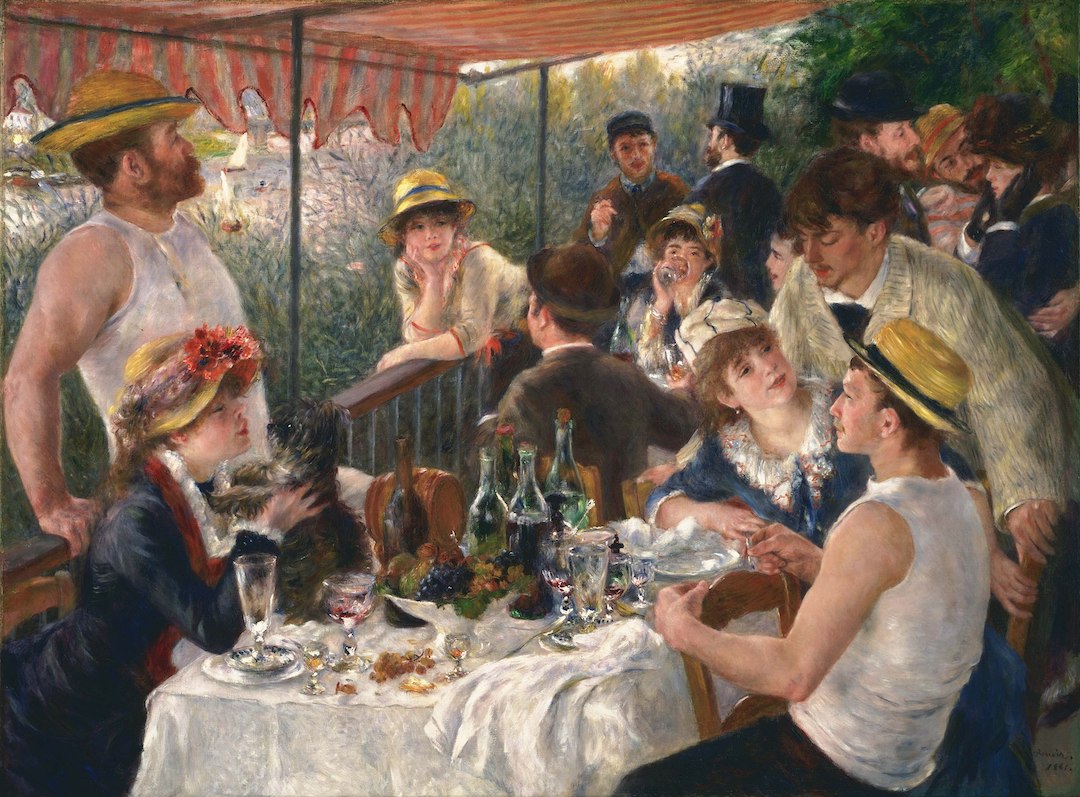 Pierre-Auguste Renoir was one of the most celebrated artists of the 19th century, known for his vibrant and light-infused paintings. Born on February 25, 1841, in Limoges, France, Renoir grew up in a working-class family. His father was a tailor, and his mother was a seamstress. When Renoir was a child, his family moved to Paris, where he spent much of his youth. The young Renoir showed an early talent for drawing and an appreciation for art. However, financial constraints meant that he couldn’t immediately pursue formal training in the arts.
Pierre-Auguste Renoir was one of the most celebrated artists of the 19th century, known for his vibrant and light-infused paintings. Born on February 25, 1841, in Limoges, France, Renoir grew up in a working-class family. His father was a tailor, and his mother was a seamstress. When Renoir was a child, his family moved to Paris, where he spent much of his youth. The young Renoir showed an early talent for drawing and an appreciation for art. However, financial constraints meant that he couldn’t immediately pursue formal training in the arts.
Early Childhood and Training
Renoir’s artistic journey began in an unconventional manner. At the age of thirteen, he became an apprentice at a porcelain factory, where he learned to paint delicate designs on fine china. His work was so impressive that he was soon entrusted with creating more intricate designs. This early experience not only honed his technical skills but also instilled in him a lifelong love for vibrant color and decorative elements. After the factory closed in 1858, Renoir decided to pursue a career as an artist. He enrolled in the École des Beaux-Arts in 1862 and also studied under the Swiss artist Charles Gleyre, where he met fellow students Claude Monet, Alfred Sisley, and Frédéric Bazille, who would later become key figures in the Impressionist movement.
Early Works and the Rise of Impressionism
In the early 1860s, Renoir began to produce paintings that reflected the influence of his academic training, characterized by a detailed, realistic style. However, his friendship with Monet, Sisley, and Bazille led him to experiment with new approaches to painting. Inspired by the innovative techniques of these artists and the vibrant, natural scenes they sought to capture, Renoir began to break away from the conventions of academic art.
Renoir’s early works, such as “La Grenouillère” (1869), painted alongside Monet, demonstrated his growing interest in capturing the effects of light and atmosphere. He began to experiment with loose brushwork and bright, unblended colors, focusing on scenes of leisure and modern life. These works laid the foundation for the Impressionist movement, which sought to capture the fleeting effects of light and color rather than the precise details of a scene.
Immersion in Impressionism
Renoir quickly became one of the leading figures of the Impressionist movement, which held its first exhibition in 1874. His paintings from this period, such as “Dance at Le Moulin de la Galette” (1876) and “Luncheon of the Boating Party” (1881), are considered masterpieces of Impressionism. These works are characterized by their vibrant colors, lively compositions, and the joyful depiction of contemporary Parisian life. Renoir’s ability to capture the play of light and shadow, as well as the movement and vitality of his subjects, made him one of the most beloved artists of his time.
Despite his success, Renoir grew dissatisfied with the limitations of Impressionism by the mid-1880s. He felt that the movement’s emphasis on spontaneity and loose brushwork had led to a neglect of the more disciplined aspects of painting, such as composition and form. Renoir’s search for a more structured approach to art led him to study the works of the Old Masters, particularly the Renaissance painters Raphael and Titian.
Rejection of Impressionism and Later Works
By the late 1880s, Renoir had shifted away from the Impressionist style, embracing a more classical approach to painting. This period, often referred to as his “Ingres period,” was marked by a focus on line, form, and the depiction of the human figure. Works like “The Large Bathers” (1887) showcase Renoir’s renewed interest in the solidity and structure of the human form, as well as his admiration for the traditions of classical art.
Renoir’s later works, however, did not abandon the vibrant color and sensuality that had characterized his earlier paintings. Instead, he combined the disciplined approach of his later years with the luminous color palette of his Impressionist works, creating a unique synthesis of styles. His portraits, nudes, and scenes of domestic life from this period, such as “Gabrielle with a Rose” (1911), reflect this mature style.
Last Years and Legacy
In his later years, Renoir suffered from severe rheumatoid arthritis, which made painting increasingly difficult. Despite this, he continued to create art, adapting to his physical limitations by having brushes strapped to his hands. His determination and passion for painting remained undiminished until his death on December 3, 1919.
Renoir’s legacy as an artist is profound. He is celebrated not only as one of the pioneers of Impressionism but also as a master of color and form. His ability to capture the beauty of everyday life, the warmth of human relationships, and the joy of existence has left an enduring impact on the world of art. Renoir’s works continue to be admired for their vibrancy, elegance, and timeless appeal, ensuring his place among the greats of Western art.
-Lê Nguyễn Thanh Phương-
